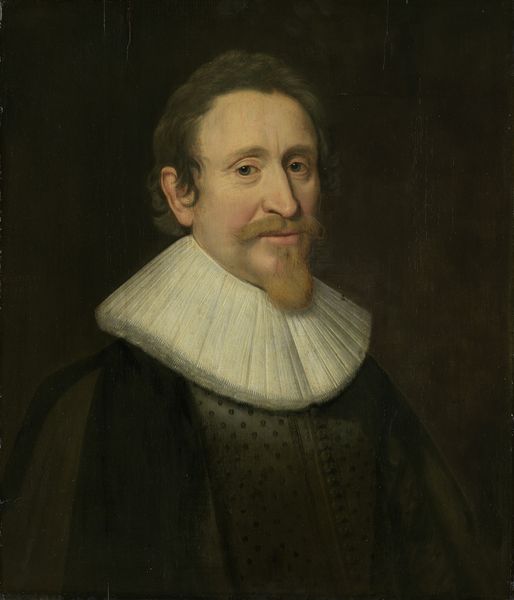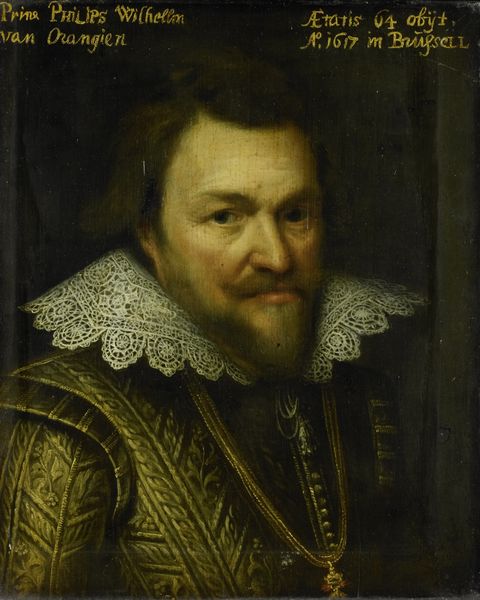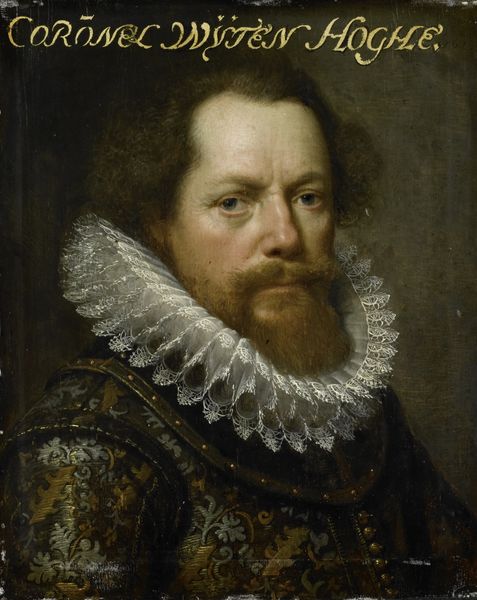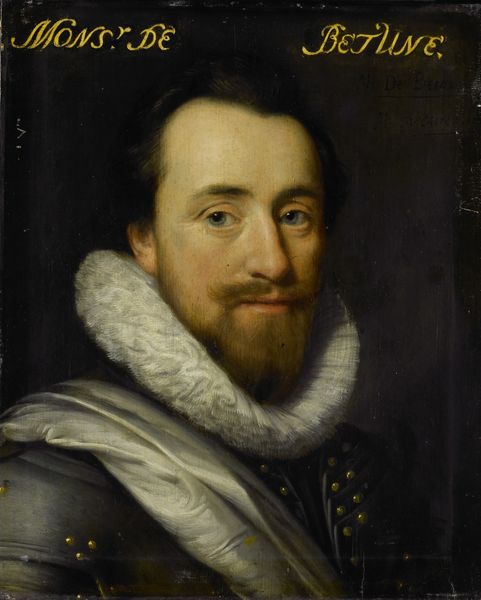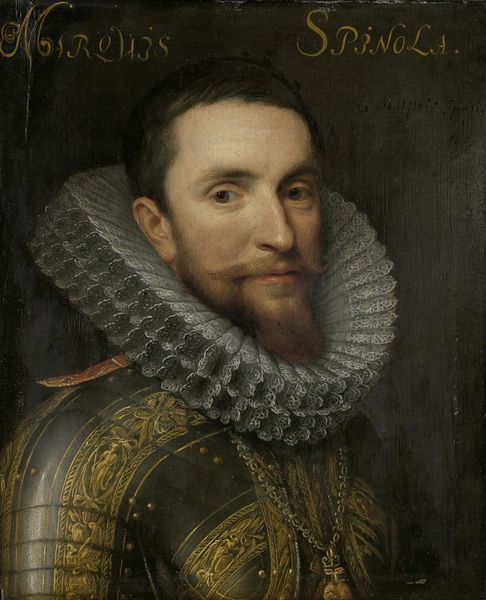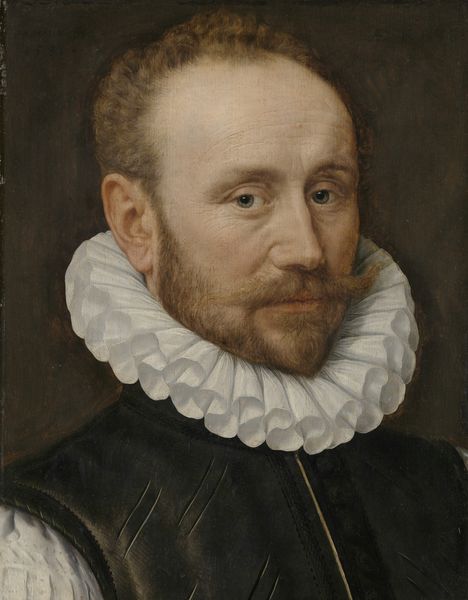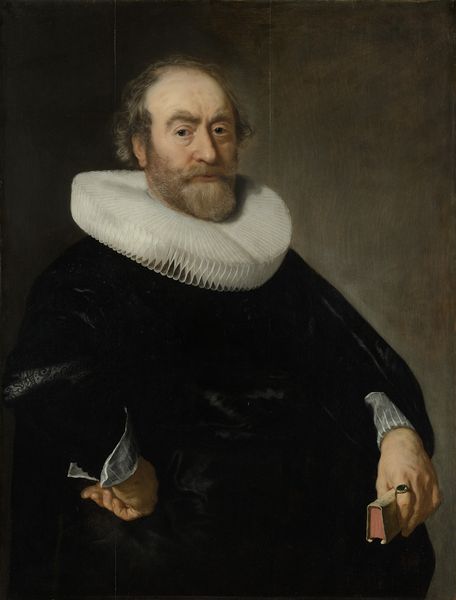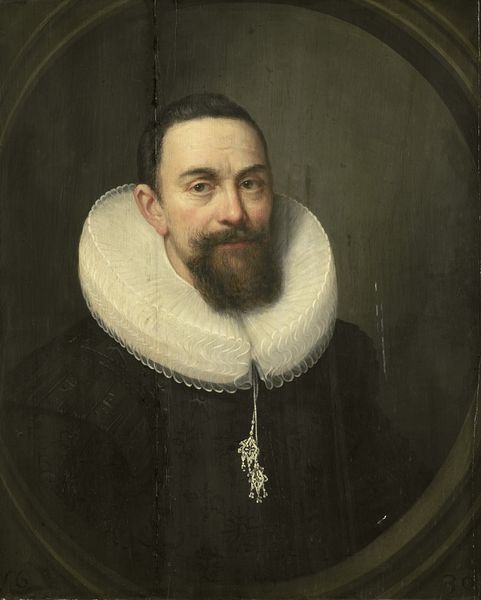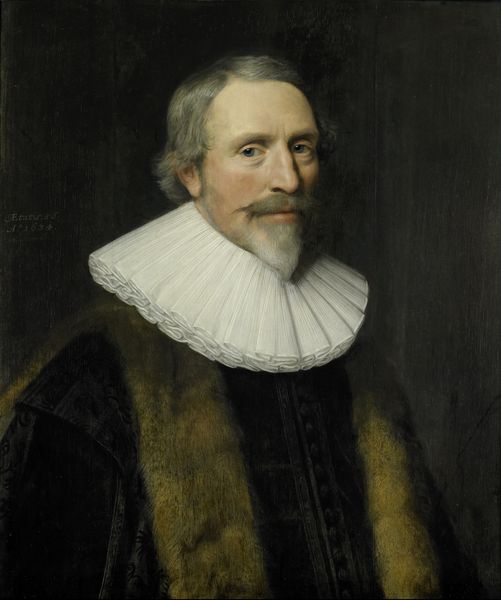
painting, oil-paint
#
portrait
#
painting
#
oil-paint
#
mannerism
#
history-painting
#
northern-renaissance
Dimensions: height 48 cm, width 35 cm, height 68 cm, width 55 cm, depth 5.5 cm
Copyright: Rijks Museum: Open Domain
Editor: This is Adriaen Thomasz. Key's "Portrait of William I, Prince of Orange," created around 1579 using oil paint. It’s striking how much detail there is in his clothing, especially that ruffled collar! What stands out to you? Curator: The exquisite rendering of textiles, especially the collar, isn't just about depicting wealth, but speaks volumes about production, labor and the social hierarchy embedded in 16th-century manufacturing. Consider the materials - where were they sourced, how were they processed, and who was involved at each stage? Editor: I hadn't considered that aspect! It’s easy to just see a pretty collar, but there were probably whole workshops dedicated to making that lace. Curator: Exactly! And it reflects power. Key, like many Northern Renaissance artists, used oil paint, but his application serves to highlight social standing. What does the precise detailing and expensive pigment choice tell us about Key’s relationship to his patron, or Prince William's perception of himself? Editor: So it’s not just a portrait, it's almost a document of material culture and economic relationships at that time. The detail involved likely conveyed wealth but also power or influence, if these goods were manufactured within a certain territory under Orange’s control, perhaps. Curator: Precisely. It prompts a reconsideration of portraiture itself. Is it simply capturing likeness, or a carefully constructed performance mediated by materials and their production? The deliberate construction evident challenges any idea of the ‘natural.’ Editor: That really changes how I view these kinds of historical paintings! I usually focus on the person depicted, but understanding the materials used and how they were made opens up a whole new perspective. Curator: And that's how we unpick layers of meaning! Hopefully that opens the doors to questioning similar works based on how they're constructed rather than what's simply represented.
Comments
rijksmuseum about 2 years ago
⋮
Of the noblemen who rebelled against Phillip II’s Spanish rule of the Netherlands, William of Orange rose to become the great leader of the Dutch Revolt. He defended his own interests, strove for greater independence and advocated freedom of religion. In 1580 Phillip II put a price on his head, and he was assassinated four years later.
Join the conversation
Join millions of artists and users on Artera today and experience the ultimate creative platform.




